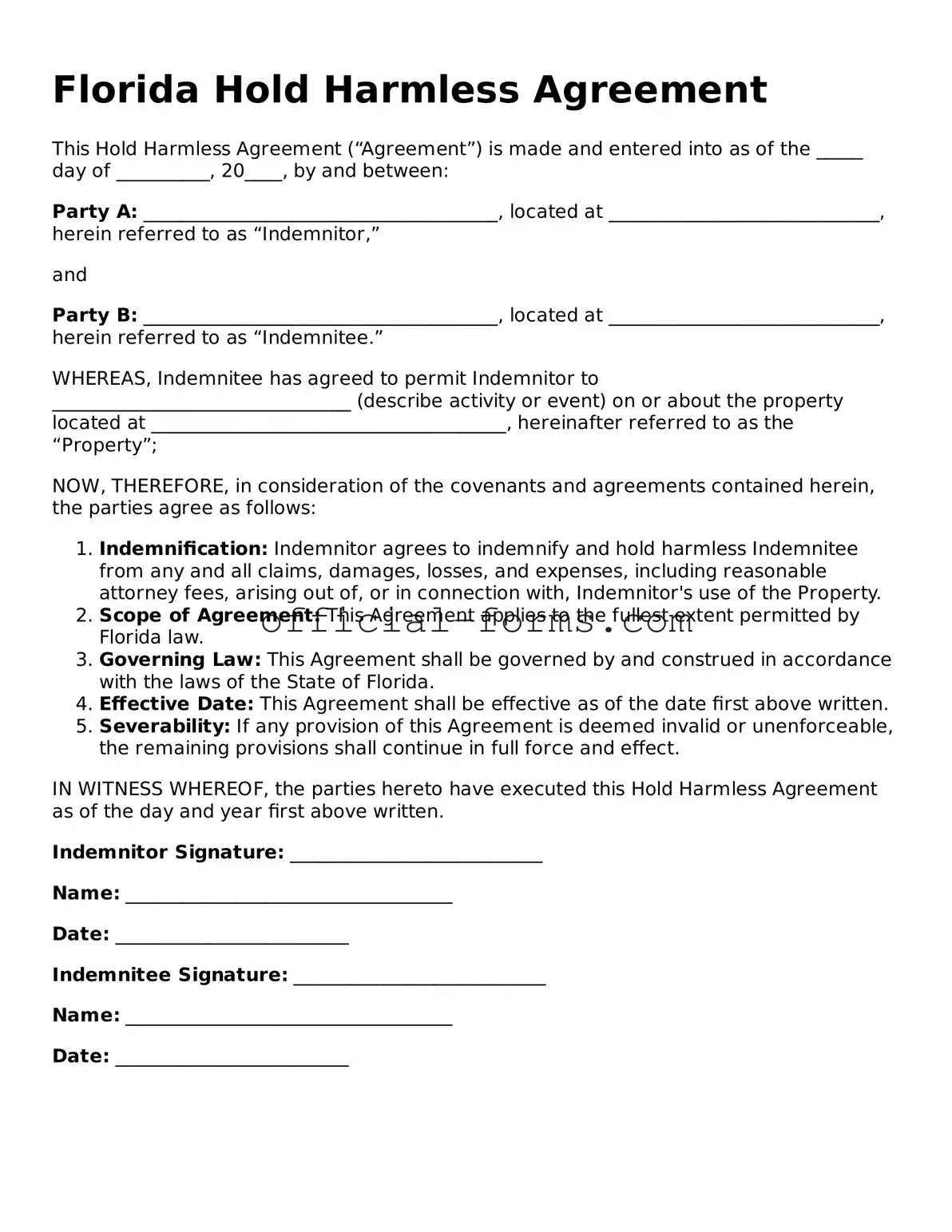Official Florida Hold Harmless Agreement Document
The Florida Hold Harmless Agreement form is a legal document that protects one party from liability for any damages or injuries that may occur during a specific activity or event. By signing this agreement, individuals or organizations agree to assume responsibility for any risks involved, effectively shielding the other party from potential claims. This form is commonly used in various situations, including rental agreements, events, and construction projects.
Open My Hold Harmless Agreement Now
